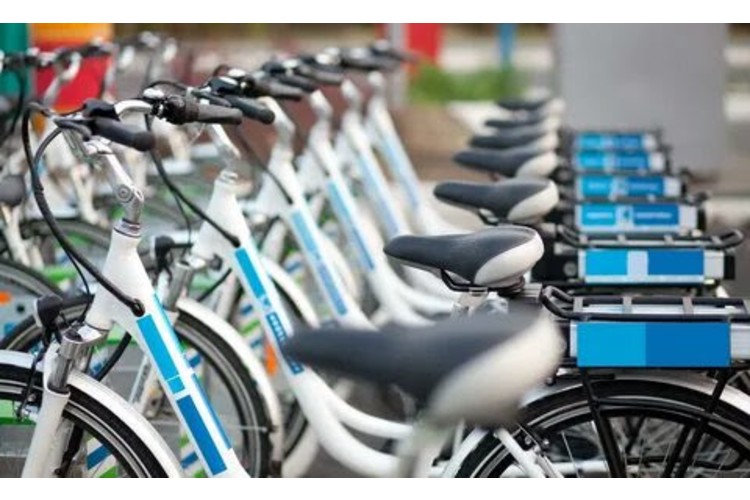The bicycle industry is undergoing a dramatic transformation, emerging as one of the fastest-growing mobility sectors in the world. Fueled by shifting consumer lifestyles, environmental consciousness, urban mobility needs, and cutting-edge innovation, the Bicycle Market is pedaling its way toward a promising future. Once considered a simple mode of transportation or a recreational hobby, bicycles are now a central piece of global sustainable mobility initiatives. According to Fairfield Market Research, the market is expected to witness a robust surge in demand across various categories, from electric bikes and cargo bikes to high-performance racing models and smart bicycles.
Urban Congestion and Micro-Mobility: A New Urban Commute
With traffic congestion becoming a growing concern in megacities, bicycles have become a go-to alternative for urban commuting. Governments are investing heavily in bicycle infrastructure, including dedicated lanes, secure parking, and city-wide bike-sharing systems. Micro-mobility, which includes bicycles and e-bikes, is increasingly being seen as a solution to “last-mile connectivity” challenges, especially in densely populated areas.
As city planners integrate more cycling-friendly infrastructure, commuters are shifting from cars and public transportation to bicycles, especially for short-distance travel. This urban shift is a key growth driver for the Bicycle Market and will continue to reshape city transportation models.
The E-Bike Revolution: Pedal Power Meets Technology
Among the fastest-growing segments in the bicycle industry, electric bicycles (e-bikes) have completely redefined the market. These bikes combine human pedaling with electric motor, making cycling accessible to a broader demographic, including seniors and commuters who cover longer distances.
Technological innovations—such as integrated batteries, app-based ride data, GPS, theft protection, and pedal assist levels—are fueling consumer interest. In many countries, incentives and subsidies for e-bike purchases are also encouraging adoption. As the cost of lithium-ion batteries drops and performance improves, e-bikes are expected to make up a significant portion of the global Bicycle Market in the coming years.
Health, Wellness, and the Post-Pandemic Fitness Boom
The COVID-19 pandemic served as a wake-up call for millions to prioritize health and fitness. Amid lockdowns and gym closures, people turned to cycling as a socially distanced and effective way to stay active. This fitness-driven mindset has carried into the post-pandemic world, making bicycles a staple in many households.
Bicycles have become synonymous with physical and mental well-being, especially among urban dwellers looking to balance sedentary desk jobs with an active lifestyle. From casual weekend cyclists to professional fitness enthusiasts, this growing segment is pushing up sales across both traditional and electric bicycle categories.
Sustainability and Eco-Friendly Transport Choices
As climate change awareness reaches critical mass, bicycles are positioned as one of the most eco-friendly transportation modes. With zero emissions and minimal environmental impact, cycling offers an effective way for individuals and cities to reduce their carbon footprint.
Environmental advocates and policymakers alike are championing cycling initiatives. Countries like the Netherlands, Denmark, and Germany are already showcasing what large-scale cycling adoption looks like, with millions of citizens cycling daily to work, school, and errands. Such efforts are now being replicated in North America, Asia-Pacific, and Latin America.
According to Fairfield Market Research, sustainability will remain a cornerstone in shaping consumer and institutional decisions within the Bicycle Market. The circular economy, recyclable frame materials, and green manufacturing practices are now vital factors influencing brand perception and consumer loyalty.
Bicycle-Sharing Programs and Rental Platforms
The rise of app-based bicycle rental services and dockless bike-sharing programs is revolutionizing how people access bicycles. Urban canters worldwide are deploying bike-sharing stations that enable short-term rentals at affordable rates, significantly expanding access to bicycles without the need for ownership.
Companies like Lime, CitiBike, Mobike, and Bird are investing heavily in intelligent fleet management, AI-powered route optimization, and smart locking systems to create seamless user experiences. As consumers lean toward “access over ownership,” subscription models and ride-as-you-go systems are becoming highly popular, especially among younger, tech-savvy populations.
Advanced Materials and Smart Bicycle Designs
The bicycle of today is far more advanced than its predecessors. Lightweight carbon fiber frames, aerodynamic designs, integrated lighting systems, and IoT-enabled performance tracking are transforming the riding experience. Manufacturers are focusing on ergonomic designs to improve comfort and reduce injury risk, making bicycles more appealing across age groups and demographics.
Incorporating smart technologies, such as navigation assistance, ride analytics, Bluetooth connectivity, and safety alerts, has enhanced the functionality of premium bicycles. These advancements are blurring the lines between fitness equipment and high-tech gadgets, creating a strong appeal among urban professionals and tech enthusiasts.
Rising Popularity of Cargo Bikes and Family Bikes
Another emerging trend is the increasing demand for cargo and family bicycles. As more people ditch cars for daily errands, family commutes, and even local deliveries, cargo bikes are stepping in as practical alternatives. These bikes come with large storage capacity, electric-assist features, and enhanced safety designs for kids, pets, or goods.
Retailers, local businesses, and gig economy workers are now turning to electric cargo bikes as efficient delivery vehicles for urban logistics. The versatility and low operational costs make them an ideal solution for environmentally conscious businesses aiming to reduce delivery emissions and save money.
Government Incentives and Pro-Cycling Policies
Government support is a significant catalyst in the rapid growth of the Bicycle Market. Numerous cities and countries are offering financial incentives for bicycle and e-bike purchases, tax breaks for bike commuters, and grants for building cycling infrastructure. These pro-cycling policies are part of broader green mobility and smart city frameworks.
Incentives in European countries like Germany, France, and the UK have already demonstrated strong results in increasing bicycle ownership. Similarly, India, China, and Southeast Asian countries are investing in green transport corridors, promoting the adoption of affordable bicycles in both rural and urban areas.
The Rise of Women and Youth Cyclists
Traditionally male-dominated, the cycling community is witnessing a diversification boom. Brands are now offering bicycles specifically designed for women in terms of geometry, comfort, and aesthetic preferences. Similarly, youth-focused models with smart safety features, interactive apps, and trendy designs are encouraging younger generations to embrace cycling as a lifestyle.
Community-led cycling events, awareness campaigns, and influencer endorsements are breaking down societal barriers and creating an inclusive culture around biking. The shift in demographics is opening up new sub-segments and driving volume across various price points.
A Pedal-Powered Future Ahead
The global Bicycle Market is experiencing an exciting era of growth, driven by innovation, health awareness, sustainability, and urban mobility needs. With supportive policies, consumer demand, and technological evolution all aligning, the industry is well-positioned for a long and profitable ride.
As bicycles continue to serve as tools for transportation, wellness, recreation, and eco-conscious living, the industry’s future looks not just promising—but unstoppable.













